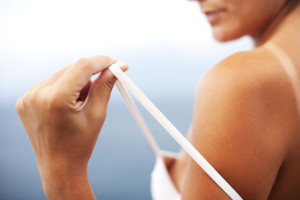
Dangers of tanning
Sun damage, next to smoking, is one of the leading causes of premature skin aging. Many wrongfully define “sun damage” as sunburn, but the truth is that even tanning that doesn’t evolve into sunburn is damaging to the skin. In fact, skin tanning is the body’s response to damaged DNA in the skin cells—the skin darkens in order to prevent further damage to the skin cells. So, a tan is really just evidence that skin damage has already occurred in the skin. While getting a “base tan” or tanning indoors might sound like a good idea in theory, these methods for getting a sun-kissed glow will not prove healthy for your skin.
Popular options: the good and the bad
So what are your options, then, for getting a safe, tanned look? First, it would be effective to know what isn’t good for your skin or body.
Indoor tanning
Indoor tanning beds are thought to be safer than outdoor sunlight by some, but in reality, the artificial UV rays produced by tanning beds can be even stronger than the natural UV rays coming from the sun. Indoor tanning beds are not a safe tanning option.
Tanning pills
What about tanning pills? They may not involve exposure to sunlight, but they can give the skin an orange hue over time, and the dyes involved can actually damage your liver. Moreover, these pills are not FDA-approved, and some have even experienced side effects such as nausea, cramping, diarrhea, severe itching, and welts when using these pills.
Spray tans
The chemicals in salon-style spray tans are not monitored by the FDA, either, and they could cause damage when ingested by the nose or mouth.
Self tanner
Self-tanning lotions that you apply to the skin from a bottle are your best bet if you want a just-walked-off-the-beach look. This method for sunless tanning involves a chemical called dihydroxyacetone (DHA) that dyes the outermost skin cells on the body, which means that the tan will only last as long as those outer skin cells remain. Studies have shown that when used correctly, DHA is considered safe. Just keep in mind that sunless tan lotions are not a substitute for sunscreen. Even if you are enjoying a lotion-produced sun-kissed glow, be sure to apply plenty of sunscreen before heading outdoors.
